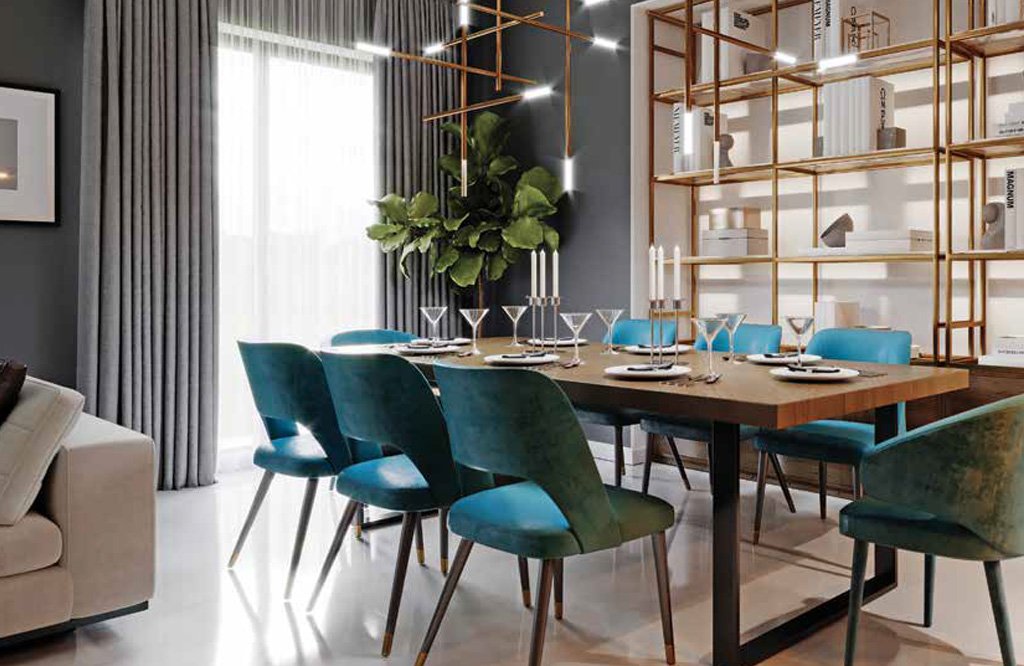
Beginners guide to home Decoration
- bey0ndM@gz!ne
- November 6, 2021
- Default, Lifestyle
- 0 Comments
Moving to a new home? Or simply bored with the current state and wanting a more well-designed space? Thanks to the internet, finding design inspiration for your home has never been easier. However, it is easy to feel overwhelmed and be unsure of your choices when it comes to the actual implementation.
That’s why we asked Heena Ahuja, Senior designer, SARA Interior Design HK, to share her top tips for the ‘Interior Design Beginners’ amongst us. These will give you a solid foundation in design principles and assist your creative ideas in reaching their full potential.
Yep! You are welcome!
Create Focal points
Create a focal point in each room – something interesting or beautiful – that your eyes naturally draw towards. This can be a piece of art such as a painting or a sculpture, a gorgeous pendant light fixture, a feature wall, or even a nice couch.
Earmark the focal point’s location. Do this before or while working out your room’s layout and its furniture placement plan. The layout should naturally draw the eye to the focal point. It should not block the view or make people face the other way from it.
Consider Visual balance
 A well-designed room attracts you, comforts you, and makes you feel at home. One of the most important factors that determine how a room ‘looks’ and ‘feels’, is how balanced the design is! Balance means equal distribution of ‘visual’ weight in a room. It encompasses all furniture, fixtures, and accents. Remember that ‘visual’ weight considers the color, texture, and shapes of the objects as well.
A well-designed room attracts you, comforts you, and makes you feel at home. One of the most important factors that determine how a room ‘looks’ and ‘feels’, is how balanced the design is! Balance means equal distribution of ‘visual’ weight in a room. It encompasses all furniture, fixtures, and accents. Remember that ‘visual’ weight considers the color, texture, and shapes of the objects as well.
Darker, larger, complex, and highly textured objects or elements appear visually heavier. Balance them with the same object on the other side for symmetrical classic looks. You can also try different objects but of similar ‘visual’ weight for asymmetrical balance. This lends an informal and dynamic vibe to the space.
Invest in large, classic pieces
When you are getting started with designing, a good rule of thumb is to go slow and invest in a few big high-quality pieces such as a sofa, rug or bed. They are visually heavy items that will draw a lot of attention, so you would want them to look their best. Once you have that, fill in the gaps with smaller furniture pieces and accessories.
It is a good idea to stick to classics for the investment pieces because you won’t be changing them frequently. Choose designs that are timeless. Then have fun following trends with smaller pieces and accessories that are easy and inexpensive to change.
Don’t forget the importance of good
lighting In photography, the pros say that getting the lighting right is 80% of the skill. The same holds true for interiors, where correct lighting can make any space look appealing. People often get too absorbed in picking the right furniture and décor and spare little time, budget, or space, for
the right lighting in the room. Plan your lighting in advance – never as an afterthought. Go beyond the general illumination of the rooms. Add multiple indirect light sources that can instantly uplift the ambiance. Think floor lamps, table lamps, candles, and more to make your spaces warm and inviting. Where possible, install dimmer switches or Wi-Fi-enabled smart-bulbs that allow you to choose the color and intensity of lights for
that perfect mood lighting.
Don’t pursue the Internet blindly
Finding inspiration for home decor is no longer a challenge. We can’t thank social media and the Internet enough for this! However, don’t expect your home to always look and function as it’s shown online. Online pictures are meant to show furniture designs or design principles to the viewers. They are not necessarily a home that gets lived in every day, often by our little ones as well.
Choose some key elements from there that work for you and then inject your own personality by adding pieces that truly reflect your lifestyle. Family pictures, travel memories, sentimental pieces are what go into making a well-lived gorgeous home.




